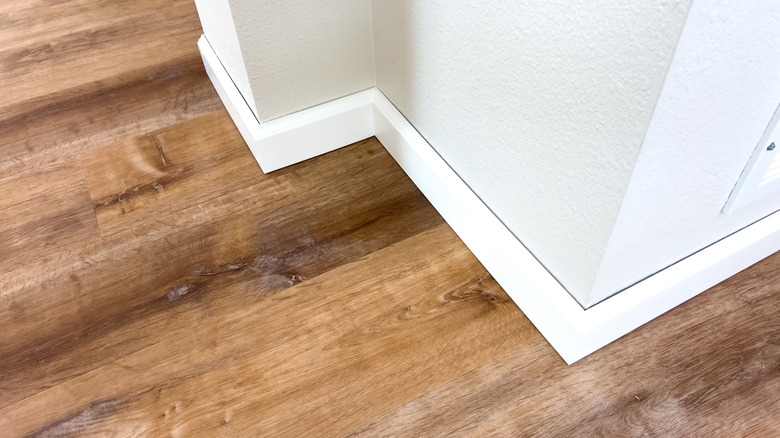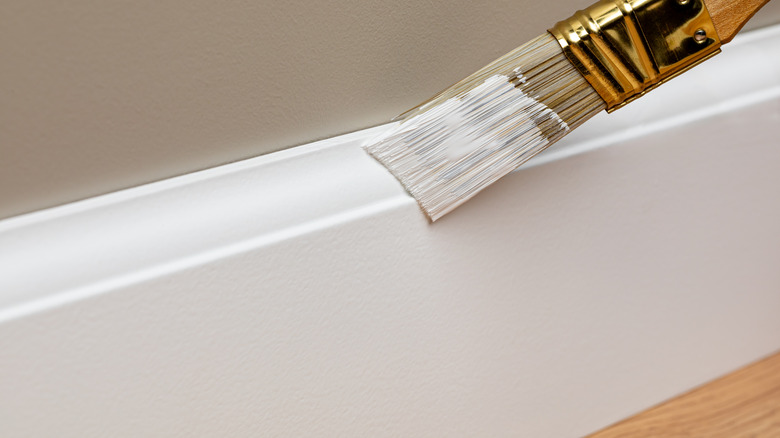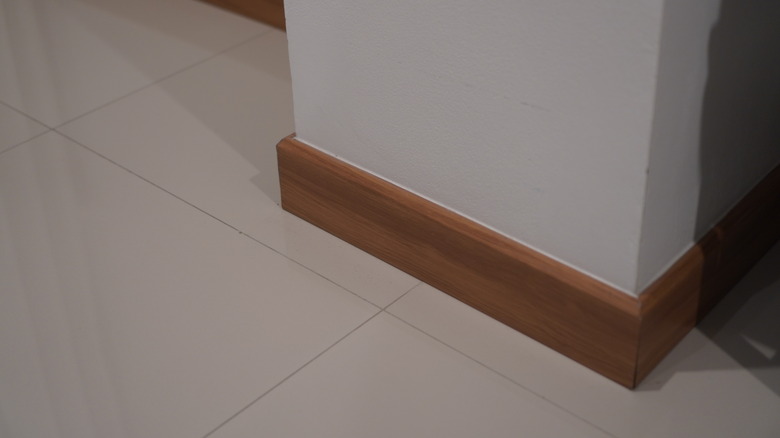Wood Vs White Trim: Which Is The Better, Trendier Option For Your Home?
Trim may take up a small amount of space, but the visual appeal it adds to a room is significant. Not only does trim offer a finishing touch to rooms, it can also act like its own design feature when added to wall panels, stairs, or ceilings. Most often, trim is placed at the bottom of a wall where it meets the floor to interlock the surfaces and cover gaps. And much like the other design choices that can be used throughout the home, there is now more variety in terms of trim styles than ever before. The look of trim ranges from classic, neutral paint colors (including white) that match walls to intricately carved, finished wood. From white trim to wood trim, the right choice is dependent on your stylistic preferences.
White trim is dominating at the moment, as neutral tones still reign supreme. It's also a smart choice for homeowners who want to simply complete the room and move on to their next design project. But wood-stained trims still have their place in interior design, as the character and grain of hardwood is unmatched. Those who want charm and character to span throughout a room's design would benefit from a wood trim that shows off the versatility of hardwood pieces that surround it. To choose the perfect color for your trim, look around at the aesthetic elements of the space. Let the prominent colors and textures serve as a guide, ensuring the chosen trim coordinates well with the established styles.
White trim is classic and timeless
Trim, in a tasteful neutral like white, will never go out of style. It works well in every type of space and matches every design aesthetic. Instead of a trendy wood look, you can keep it classic with a traditional white, ivory, off-white, or cream to make your space unique. Consider the size of your trim and take that into account, as well. For a thicker trim that measures more than an inch above the floor, consider a neutral color, like white, to avoid overpowering or unbalancing the room.
You can also combine the best of white and wood trim with an off-the-cuff solution: select a wood trim with rich character and then paint it white yourself. One thing to remember about white trim is that it is harder to hide common household wear. The color may fade over time, or tannin bleed will make the trim look imperfect. White trim may also require extra attention and cleaning to maintain its crisp appearance.
Wood trim offers old world charm
Trim has become such a staple of interior design, so much so that HGTV's Joanna Gaines proved it's the one simple design choice that brings out the beauty in any room. It presents a new opportunity for design experimentation where homeowners can match the trim's wood tone to their walls or floors, or pick a coordinating tone. Compared to white trim, exposed hardwood trim definitely stands out more, visually demanding attention. Additionally, wood trim is often chosen for transitional areas between rooms, demonstrating its versatility. The reason wood-toned trim is ideal for doorways and delineating rooms is that the texture will continue the visual interest between the areas.
The design choices don't stop there, as there are several different hardwood species in varying colors and grain styles to pick from. There are light woods, such as oak, that showcase the wood's rustic character. Alternatively, there are darker woods, such as cherry, that feel contemporary and can hide imperfections better than lighter tones. If you're looking for a less expensive option than buying new wood trim, try sanding and staining your existing trim with a glossy wood stain. Take note of the helpful tips savvy DIYers will want to know before using wood stain.


